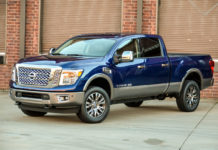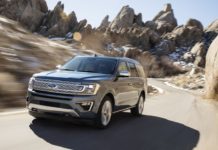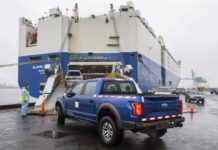The future of the hulking Jeep Commander SUV introduced a little over a year ago looks bleak.
Auto analysts and other industry officials say the Commander, a boxy three-row SUV built at Chrysler's Jefferson North Assembly Plant in Detroit, is likely to be discontinued after the 2009 model-year.
“We removed the Commander from our forecast” after the 2009 model year, said Jeff Schuster, forecasting analyst with California-based J.D. Power and Associates. J.D. Power and other auto forecasting firms gather information from suppliers and other industry sources privy to automakers' future production plans.
Another automotive analyst, who didn't want to speak on the record, shared a similar forecast.
A United Auto Workers official, who spoke on the condition of anonymity, confirmed to The Detroit News that the union understands the Commander will go out of production in 2008, likely after the 2009 model year.
Rick Deneau, spokesman for DaimlerChrysler AG's Chrysler Group, said that the automaker does not discuss product plans.
Chrysler Group, which includes the Chrysler, Dodge and Jeep brands, swerved off course in the third quarter of last year, losing $1.5 billion. It's expected to outline an extensive restructuring plan Feb. 14.
Schuster said the Commander was too similar in size to the Grand Cherokee built on the same line at Jefferson North. “It didn't bring in different buyers,” Schuster said.
Jeep sold 88,497 Commanders in 2006 with the help of heavy discounts. Edmunds.com, a Web site for car shoppers, estimates Jeep offered an average of nearly $8,000 in incentives on the Commander in the last four months of 2006. The sticker price for the Commander starts around $28,000 and can climb above $40,000.
The Commander also appeared to eat into demand for the Grand Cherokee, once one of America's most popular vehicles. Jeep sold 139,148 Grand Cherokee's last year, down 75,000 units from 2005.
“It's a logical move to get rid of the Commander given the small incremental sales increases,” said Erich Merkle, an analyst with IRN Inc. in Grand Rapids. “The Commander has had a dramatic negative impact on the Grand Cherokee.”
The Commander and other large SUVs have been hurt by fluctuating gas prices and increasing concerns by consumers over gas mileage.
“The product is not moving with consumers and obviously that situation is exacerbated by the continued focus on where gas prices are going to be over the next few years,” said Catherine Madden, an analyst with Waltham, Mass.-based Global Insight Inc.
As a result of slow sales, the Jefferson North plant has been idled on and off again over the last four months. This month, production at Jefferson North is scheduled to be down for three weeks and slated to resume Jan. 29, union officials said. For every seven Grand Cherokees that will be produced onward, three Commanders will come off the line.
The Commander is slightly larger than the Grand Cherokee but is not as large as the full-size Chevrolet Tahoe or Ford Expedition, which would have distinguished it from the Grand Cherokee. A Commander powered by a 4.7-liter V-8 engine gets 15 miles per gallon in the city and 19 miles per gallon on the highway, according to the EPA.
“If your fuel economy is going to be that bad, go for something that's larger and more interior space and a true third row,” Merkle said.
Dealers say the Commander has been successful at drawing buyers into showrooms and winning them over with its roomy interior and third row of seats — a first for a Jeep.
“The problem is timing,” said Mike Rhiel of Mike Riehl's Roseville Chrysler Jeep.
“That (SUV) was launched when fuel prices went up. It didn't have a fair launch because of fuel prices.”
Rhiel said sales could rebound if gas prices stay near $2 a gallon.
“If fuel stays down that (SUV) could get some legs,” he said.







